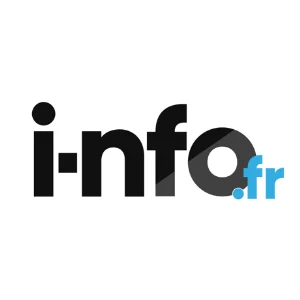The year 2009 was the one in which Apple posed its first pawn on the chessboard of the semiconductors. At the time, Intel reigned supreme on computers, while Samsung dominated the production of mobile fleas. The Cupertino giant, already a pioneer with the exit ofson premier iPhonetwo years back,very rightly anticipa the limits of this technological dependence.
Apple then engaged in an ambitious project:Develop your own processor architecturesTo gain autonomy.
When Apple dared to think differently
16 years ago, in 2009, the mobile semiconductor sector was changing. Apple, aware of the challenges of vertical integration, launchedthe development of personalized processorsWith Samsung Foundry.
Apple processors, made to measure for the iOS environment, quickly establish new performance standards. Their unique design, optimized for mobile applications, wasAn example of energy efficiency and calculation power. Samsung, despite its industrial mastery and its Exynos processors, failed to reproduce this symbiosis.
The dazzling ascent of Samsung in the world of smartphones changed the balance of forces. Apple, anticipating the risks of excessive dependence, began a prospecting of the foundry market. Intel Custom Foundry and Texas Instruments emerge as potential alternatives,But their respective limitations quickly appeared. Intel, a prisoner of his vertical model, did not master the subtleties of tailor -made production. Texas Instruments, despite its expertise, did not have advanced engraving technologies necessary for Apple's ambitions.
This quest for technological autonomy was the main symptom of the great transformation of the sector:adaptability and personalizationhave become the real markers of excellence, beyond the simple control of manufacturing processes. An evolution which already prefigured the emergence of fleasApple Silicon.
Why did Intel not convince Apple
The year 2011 was particularly important in the separation between Intel and Apple. Paul Otellini, then at the head of the company, perceived in the transformation of Apple a juicy opportunity. His proposal to make Apple processors relied on a apparently, unstoppable logic: Intel already controlled the production of fleas for Mac,Why not extend this collaboration?
This approach caused a two -month freezing in negotiations with TSMC. The company sought to establish a solid partnership with Apple to become the main flea supplier for its mobile devices, including the iPhone and iPad.
This period was actually dueto the dilemma facing the Cupertino firm. Choosing your historical partner (Intel) or taking the side, more risky, of flexibility proposed by TSMC.
The movement of Morris Chang to Apple headquarters was a pivotal moment in the semiconductor industry. The founder of TSMC understood that the manufacture of processors was in full change: the transition from standardized production to a tailor -made approach. His visit reflected the desire to demonstrate concretelyTSMC's ability to reinvent manufacturing processes.
Where Intel has built its reputation on the production in series of standardized processors, TSMC has developed radically different expertise. The testimonies of the Taiwanese customers of Intel, collected by Chang, illustrate this divergence: "When a customer always asks more, we adapt and we meet all his requirements, even the most absurd, always with courtesy. Intel, on the other hand, never worked like that. Here in Taiwan, all their customers dreamed of an alternative».
Two irreconcilable visionsmanufacture of semiconductors. On the one hand, TSMC conceived each production line as perfectly adaptable according to the unique needs of customers. Opposite, Intel maintained an industrial vision where the optimization of production channels prevailed over personalization. For Apple, who sought to develop radically new processor architectures,This technical flexibility became a decisive criterion: TMSC was the ideal partner and this collaboration gave birth to generations of fleapropelled its ascent at the top of technological industry. Series A, M series: real racing beasts.
- As early as 2009, Apple sought to reduce its dependence on flea manufacturers by developing its own processors.
- Faced with the limits of Intel and Texas Instruments, the brand has finally chosen TSMC for its flexibility and its expertise.
- This partnership has enabled Apple to design tailor -made fleas, propeling its devices at the top of Tech industry.

i-nfo.fr - Iphon.fr official app
Equal: AG Tescience






